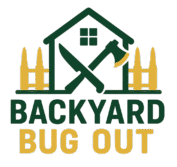Every good prepper knows that food, water, and skills keep you alive — but home security keeps you safe enough to use them. A well-stocked pantry or backup power system doesn’t mean much if your home is vulnerable to intruders, looters, or even opportunistic neighbors during a crisis.
This comprehensive guide covers layered prepper home security, showing you how to make your house harder to target without making it look like a bunker. From lighting and locks to defensive mindset and responsible weapon ownership, this is the balanced blueprint every modern prepper needs.
What “Prepper Home Security” Really Means
For most people, “home security” means cameras, locks, and alarms. For preppers, it’s deeper than that. Prepper home security is a system of physical, digital, and behavioral layers that protects your home and family whether the grid is up or down. It’s about deterring attention, buying time, and defending legally and effectively when every second counts.
The Three Layers of Home Security
Building a solid prepper home security plan means thinking in layers — exterior, interior, and defensive response. Each layer adds more protection without broadcasting paranoia or fear.
1. The Exterior Layer – Deterrence
- Lighting: Motion-activated LEDs on corners and paths reduce hiding spots and alert you instantly.
- Landscaping: Trim shrubs near windows, add thorny bushes under them, and use gravel paths to create natural sound alerts.
- Locks and Reinforcement: Use deadbolts, door jammers, and longer screws in strike plates.
- Cameras and Signs: Real or decoy cameras plus a simple “24-hour surveillance” sign can deter most opportunists.
2. The Interior Layer – Delay
- Safe Rooms: Designate one reinforced room with a solid-core door, phone charger, and basic supplies.
- Windows and Doors: Add security film to windows and install a peephole on every entry.
- Noise Control: Layer rugs and drapes to muffle interior noise from broadcasting your movements during an emergency.
3. The Defensive Layer – Response
This is the layer that most preppers overlook or overdo. Responsible prepper home security means being ready to defend, but never eager to engage.
- Training: If you own firearms, get professional instruction. Practice safe handling and understand your local laws.
- Less-Lethal Options: Pepper gel, tasers, and tactical flashlights can give you time to retreat safely.
- Communication: Create verbal signals with family for “all clear,” “danger,” or “bug out.”
Digital Security for Preppers
Even the most fortified home can be compromised through digital oversharing. Don’t post details of your gear, safe, or routes online. Use strong passwords and a VPN, and avoid sharing your exact address on prepping forums.
Camouflage vs. Overexposure
Your home should appear ordinary from the street. Avoid visible solar batteries, water drums, or stacked supplies near windows. Blend your preparedness into everyday life — a core principle of smart prepper home security.
The Human Element
Security isn’t just hardware — it’s mindset. Train your family to stay aware of surroundings, use cover, and lock doors instinctively. Host simple “what-if” drills: break-in, fire, and communication failure. Calm repetition builds muscle memory.
Building a Community Network
Neighbors are your first line of defense. Form a local watch, trade phone numbers, and check in during power outages. When others know you’re vigilant, criminals notice too.
Responsible Tactical Defense
Firearms are an important layer for many preppers, but they come with weighty responsibility. Keep them locked, maintained, and accessible only to trained adults. Focus on accuracy and discipline — not intimidation. Remember, prepper home security is about preventing confrontation, not provoking it.
Final Thoughts
True preparedness balances visibility with practicality. A secure home doesn’t need to look fortified — it needs to function that way quietly. Layer your defenses, build your network, and stay adaptable. Because when crisis comes, your prepper home security plan will be what stands between order and chaos.
FAQ: Prepper Home Security
How do I secure my home without making it obvious I’m a prepper?
Use subtle reinforcements — reinforced doors, blackout curtains, and hidden cameras. Avoid obvious tactical gear in plain view.
What’s the best affordable security upgrade?
Start with lighting and locks. A few motion-activated floodlights and longer strike plate screws make a massive difference for minimal cost.
Should preppers rely on alarm systems?
Yes — but assume they’ll fail during grid-down scenarios. Have manual and physical backups for every digital system.
Is a firearm necessary for home defense?
It’s a personal decision. Firearms can be effective but require training, legal knowledge, and respect for their power.
🔗 Internal Links:
Bug-Out vs Bug-In |
Everyday Carry for Preppers |
Family Emergency Communication Plan
🌎 External Links:
Ready.gov – Home Security Basics |
NRA – Home Safety and Training |
FEMA – Preparedness Resources
